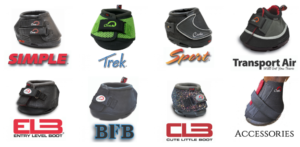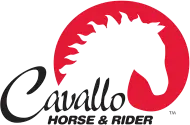Advice to Farriers
-
February 26, 2019
-
11:37 pm

We have changed throughout history in amazing ways. Practices and beliefs that were once conventional are now outdated. We believed the world was flat. Leeches were used to alleviate illness. Acid rain was only a myth. If you kept ‘making faces’ your face would stay that way forever. We have navigated in and out of opposing convictions, all the while modifying our behavior to fit our beliefs.
Our horses have tolerated protracted toes, square toes, long and short heels, straight and sloping angles. They have suffered through domestication and lack of movement. They have born the different fashions of changing supplements and feed. And ultimately through it all, they have endured compromised hoofs through the conventional practice of nailing metal nails and shoes into otherwise healthy feet. When we start to question what we believe, we can break through to the truth. It’s time to question how we treat our horse’s feet. Why do we nail metal shoes onto horse’s hoofs? The overwhelming answer seems to be: because we always have!
Horses were first shod before we understood the physiology of the hoof and certainly before we had our current level of technology. Upon examination of the natural function of the hoof, we find a miraculous structure, supporting the weight of approximately 1000 pounds in motion. The walls expand and widen apart to draw the sole flat. With the sole flattening downward towards the ground, the bone column is invited to descend. The sole gets out of the way of the descending bone column, and shock is absorbed properly within the hoof capsule.
When metal is nailed in all around, how does the hoof perform its duty? Where is the shock absorbed? It could be absorbed in the sensitive tissue of the hoof, resulting in navicular disease, pedal osteitis, and laminitis; or it can be referred to the structure further up the leg. If examined, the market proliferation of products containing Glucosamines, MSM, and anti-inflammatories is really an indication of our inadequate understanding of the shock absorbing features of the hoof. If we allow our horses’ hooves to function naturally supporting weight and movement, shock can be absorbed where it belongs and our horses’ whole bodies benefit.
When horses are fully shod, circulation is limited; hoof sensation is limited; horses cannot feel their feet. They can’t feel what they are stepping on as their weight descends. The hooves get damaged and they can’t feel it. They show no signs of lameness, so the damage continues. This is why shod horses can get stone bruising without ever even feeling it.
Pulling the shoes off allows circulation to re-establish and sensation to come back into the hoof. It is far better for our horses to feel their feet and have the option of where to place them. It is far better to allow blood to circulate through the hoof, nourishing live tissue. Circulation is imperative to the distribution of nutrients throughout the system. When flow is limited, degeneration takes place.
Change originates with a few alternative people until a point where it reaches critical mass and the new knowledge permeates a culture, a geographical area or the world. “All truth passes through three stages. First, it is ridiculed. Second, it is violently opposed. Third, it is accepted as being self-evident.” — Arthur Schopenhauer. We are now in the process of accepting, on a multitude of levels, that natural is better.
With respect to the hoof, NATURAL allows the blood to circulate with ease through the proper channels, carrying a host of nutrients; NATURAL encourages the hoof to function as it’s meant to, alleviating an array of devastating conditions and reducing the strain to extensor tendons, lateral cartilage, and joints. With increased blood flow the numbness disappears. Sometimes what the horse experiences can be compared to the feeling after frostbite, and temporary tenderness may appear.
Your horse may also show abscessing, as toxins are removed and blood supply nourishes healthy tissue. Some existing problems can become more obvious with a functioning hoof. It may seem like one step forward and two steps back. Just stick with the program and your horse will ultimately benefit. This answers the question, “Why do horses get sore and why does the soreness go away when we put the shoes back on ?” The answer is simply because without circulation, they cannot feel their feet.
Keep your horse barefoot for at least a portion of the year, using boots when you ride. Let’s face it: we have domesticated the spirited Equine. We keep them on soft ground, grassy pastures or bedded stalls. It is unfair then, to expect their hooves to be conditioned to logging roads, creek beds, asphalt or pavement. Their living environment can vastly differ from the terrain we want to ride them on. That’s where horse boots come in.
The following factors should be considered in a successful barefoot program:
1. Proper Hoof Function & Hoof Mechanism: This can be achieved in a combination of ways and by providing frequent trims tailored to the individual barefoot horse on his specific terrain.
2. Movement & Exercise/Friends & Socialization: Horses will move around more when kept in a herd, where social interaction provides motivation to move.
3. Hydration: We find that when horses need hydration they are happy to stand in a creek or watering hole for a period of time. Well hydrated hoofs, have elasticity that promotes hoof mechanism and allows for an easier trim, especially in dry weather — they are so much easier to work with. Water is the preferred method of re-hydration as many moisturizing products available on the market actually contain alcohol, solvents and other agents that draw moisture out.
We are striving towards a better understanding of the hoof function of our long time servant and companion and now have an opportunity to re-examine the way we treat our horses’ feet. Discuss the possibilities with your farrier and be motivated by the best intentions for your horse. Your farrier should be your best friend as you will need him/her to trim and visit more frequently once your horse has fully functioning, growing and alive feet.
Utilize the fruits of Cavallo’s leading-edge technology and give your horse natural comfort and protection of horse boots.
CAVALLO HORSE & RIDER US/CANADA TOLL-FREE 1-877-818-0037

